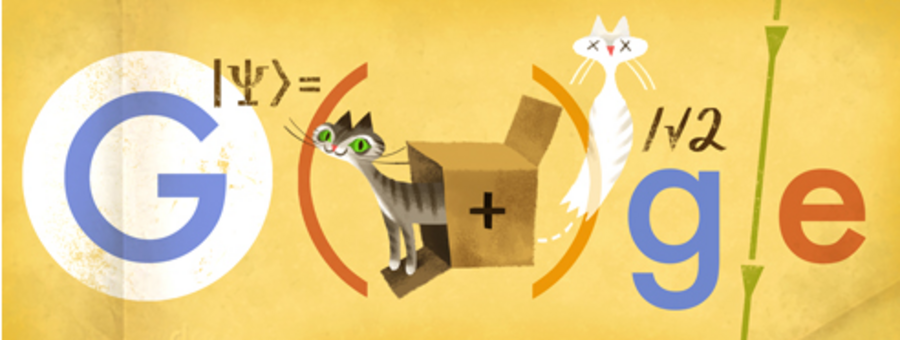Google Doodle honors Erwin Schrödinger and his paradoxical cat
What if you penned a cat in a steel chamber and then affixed to that chamber a small amount of radioactive substance? And what if, over the course of one hour, one of the atoms in that substance might – or, in equal probability, might not – decay? What if, in the 50/50 chance that the substance did decay, it deployed a hammer that shatters a flask of hydrocyanic acid that then poisons the cat?
So, after an hour, is the cat alive or dead?
It’s both, said Erwin Schrödinger, the Austrian physicist who revolutionized how quantum mechanics is understood and who is honored today in a Google Doodle.
It’s an absurd idea, ripe for riffs and jokes: "If they don't ever open the box to feed it, it'll eventually just be two different kinds of dead,” observes a character in Neil Gaiman’s novel "American Gods."
Plus, what sadistic person would ever want to do that to a cat? Who has ambiguously radioactive solutions lying around their home?
Well, Schrödinger meant it to be absurd.
Schrödinger’s simultaneously alive and dead cat is a reaction to Niels Bohr's and others’ interpretation of quantum mechanics (the Copenhagen Interpretation). That idea holds that matter has both wave-like and particle-like properties, and that subatomic particles can be in multiple places at once, until an observation is made and the object assumes just one value. Until then, the atom is represented by a mathematical formulation called a wave function that covers all the possibilities of what the object could be.
But that, Schrödinger said, is as ridiculous as a cat that is both alive and dead.
Common sense tells us that the cat cannot be at the same time alive or dead and is one or the other, even if we cannot observe it, Schrödinger said. The cat knows what it is, even if we don’t. And an atom is a fixed object – even if we cannot measure it.
Schrödinger was born in Vienna, Austria, in 1887 and grew up with a dislike for data memorization, but an appreciation for the exacting logic of grammar, according to the website for the Nobel Prize. He won that prize in 1933 for his work in quantum mechanics, which applied the logic of the Copenhagen Interpretation to a cat in a box and therein demonstrated the absurdity of the idea. His work, with which Einstein agreed, was controversial among physicists at the time, and it has remained so, underpinning long-running debates in physics about the nature of atoms.
Schrödinger’s tumultuous scientific career was concurrent with a long period of political turmoil in his home state – he left his professorship at the University of Zurich just after Hitler’s election in 1933, settling in Oxford. In 1936, he returned again to the University of Graz, only to leave again for Dublin (by way of Italy and England) after the German government identified him as a disloyal citizen, having fled three years earlier. He did not return to Vienna until 1955 and died there in 1961.







